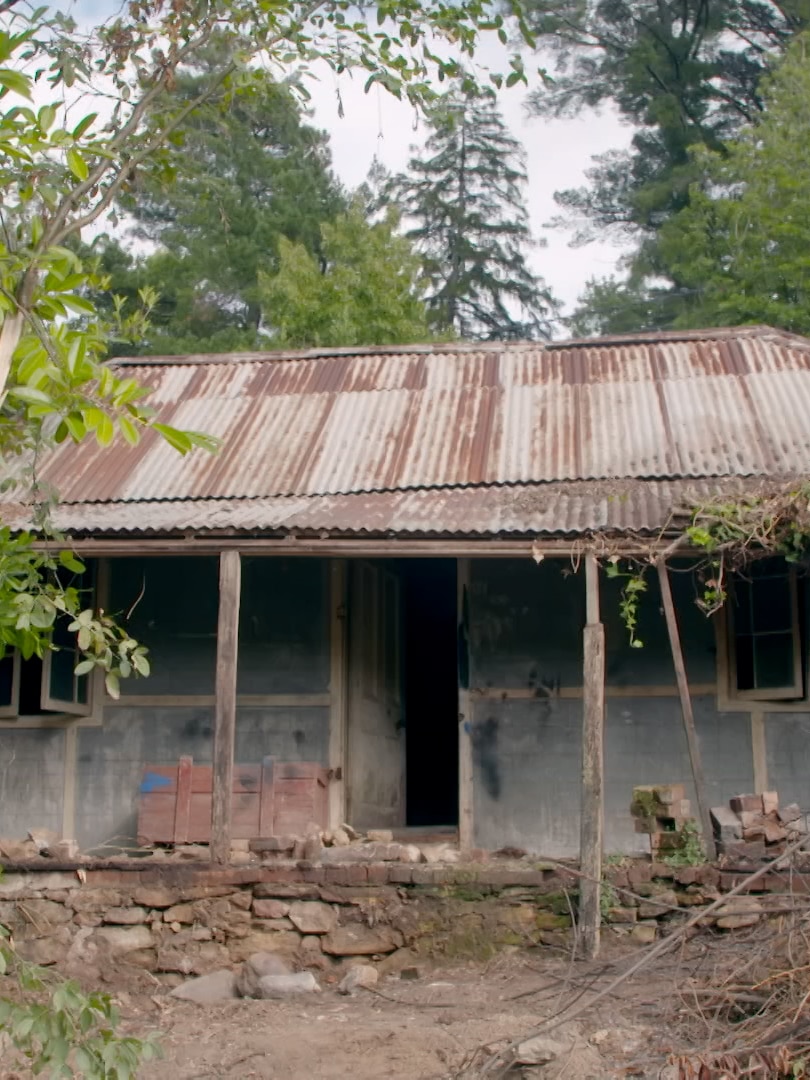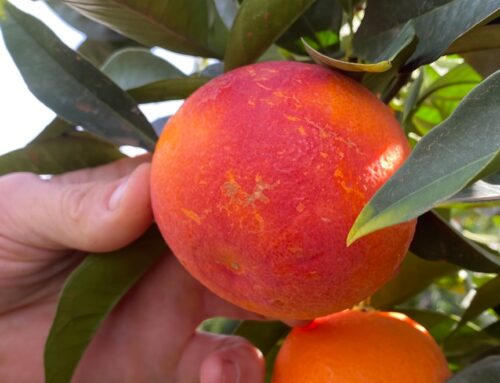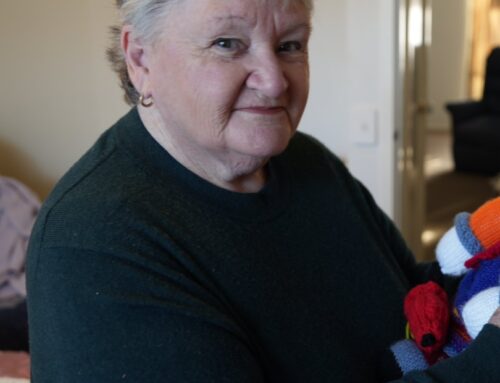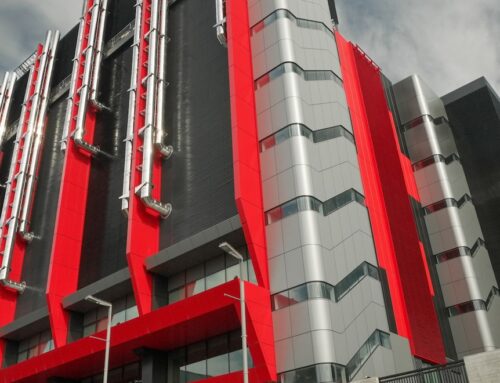When Kirsty and Mark were looking for a property in the Adelaide Hills, the heritage officer and architect were after something a little different.
They found it in the form of a 170-year-old colonial cottage that was slowly being reclaimed by thickets of blackberries and overgrowth around it.
The couple purchased the property known as Longview, which included a cottage and a second modern house, for $945,000 in late 2021.
Their plan was a DIY restoration on the 40-square-metre cottage to save the history of the building, and also give their family of five a little more room.
Even if there weren’t heritage restrictions in place, Mark and Kirsty said their aim was to do an authentic restoration, using as many techniques and materials specific to the period it was built as possible.
“There’ll be no modern paints or modern cement renders, it’ll be all lime — lime renders and lime paints,” Mark said.
The budget was $100,000 and they were hoping they could have it finished in a year.
But before any restoration could begin, they had to claw it back from the stranglehold of nearby weeds.
“I think the blackberries are literally holding it together,” Kirsty told ABC TV’s Restoration Australia.
“It’s like having a little, or big, present in your backyard that you’re not allowed to open yet.
“As we peeled away all the layers of vegetation, it got more exciting in a way because you could see the way it was built.”
The cottage was built by hand in the 1850s using a hybrid of methods called pise or rammed earth, and lath and mud, using materials readily available like clay, straw, horse hair, rocks and timber batons.
Before: The cottage had been left to ruin for many years.. . After: It was lifted as part of the restoration.. .
Instructions: Use left and right arrow keys to control image transition
SLIDE
The walls were wrapped in a crumbling lime render, and the original roof shingles were made from local stringybark.
An authentic restoration
Once the area around the cottage was cleared, the real restoration work began.
Mark and Kirsty’s plan for the cottage included:
- Restoring the enclosed sleep-out area of the cottage to its original design as a verandah
- Lifting, straightening and resurfacing the internal and external walls
- Lifting and replacing the timber floors
- Turning the rear area into a modern kitchen and bathroom
- Keeping the stringybark shingles if possible and potentially installing a new tin roof to heritage standards
- Repairing and restoring as many original windows as possible
- Re-laying the stone wall at the front of the cottage
In an effort to save costs, the pair planned on doing the bulk of the manual labour themselves.
“No normal builder would want to take it on,” Kirsty said.
“We had one guy come and say, ‘Oh I’d put a hose on it and let it wash down the hill’ and you sort of think, ‘Well you’re not for us’.
“Yeah, we are insane but it’s a pretty special little cottage.”
Wobbly walls, lifted floors
One of Kirsty and Mark’s biggest challenges was the cottage’s walls.
They needed to be pulled upright and most of its timber footings were decimated by rot or termites, and needed replacing.
“[They] will be still reasonably wobbly and no straight lines but we will try and square it up a bit as we go,” Mark said.
The walls were jacked up and secured with plywood braces to prevent them from falling apart, ready for new concrete foundations and locally sourced stringybark footings.
“We’ve got the whole building effectively off the ground,” Mark said.
“We do have some props and things sort of holding it in position and the roof is holding it in position but there is a risk that the wall will start to move one way or another and become out of plumb.
“Or move away from things or … the whole building could totally collapse like a deck of cards.”
Thankfully that didn’t happen, but just when everything seemed like it had gone well lowering the house off the jacks, a cracking noise spelled bad news.
The only original piece of timber at the base of one of the walls was crushed.
The wall it was holding up stayed intact but now sat much lower than anticipated.
“It was the only original bottom plate that was remotely sound so I pressured Mark to keep it instead of replacing the others,” Kirsty said.
“Maybe that was wrong ’cause now it’s gone.”
Before: The back area before.. . After: A fresh kitchen was added to the back.. .
Instructions: Use left and right arrow keys to control image transition
SLIDE
Reluctantly they left the wall where it was and resolved to fill below it with concrete to keep it in place.
Rebuilding layer by layer
Once the position of the walls was set, the work began on filling the gaps at the bottom where material had fallen out.
Kirsty and Mark used a mixture of mud, salvaged from the original walls, extra clay from around the cottage, water, stones, straw and horse hair replacement to fill any gaps.
“It’s like making a lasagna or something. Layer by layer,” she said.
“It’s kind of nice to be reusing everything that we’ve lost from the building as we’ve tried to restore it.”
Internal plastering and outside rendering were two of the few jobs that Kirsty and Mark outsourced.
Heritage experts tried to retain as much of the original ceiling as possible, gluing unstable patches to the timbers above or filling holes with the same materials where needed.
The other job they outsourced — to Kirsty’s dad Brian — was repairing and restoring the original windows.
Before: The living room was falling apart. . . After: The restored living room with new fireplace.. .
Instructions: Use left and right arrow keys to control image transition
SLIDE
In Kirsty’s words, the least-fun job was relaying the stone wall out the front of the cottage.
“It’s a bit of a nightmare,” she said.
“It’s like a massive jigsaw puzzle and it’s so much harder than I thought it would be.
“But hopefully it will stay standing for the rest of our lives.”
‘Back to how it was’
After sacrificing thousands of hours of weekend and after-work time, the little cottage’s restoration finally came to a close in late 2023.
Mark and Kirsty said they ended up spending around $50,000 to $60,000 more than their original $100,000 budget and it took them roughly six months longer than they’d hoped.
Despite the slightly elongated budget and timeline, the pair were grateful they took the time and put as much effort in as they did.
“There’s no handbook on how to restore a building like this because it’s not done anymore, so we had to learn ourselves and teach ourselves … and we feel like we’ve … put it back to how it was built,” Kirsty said.
“There’s definitely been moments where we wanted to kill each other that’s for sure, but that’s normal right?” she added, laughing.
Before: The cottage was rusting and falling apart.. . After: The back entrance after it was restored.. .
Instructions: Use left and right arrow keys to control image transition
SLIDE
The two main rooms were restored to their previous cosy state, complete with lime render over the pise walls.
At the back of the cottage, an original section of the stringybark shingled roof is on full display above the newly installed kitchen.
And Mark said between 50 to 60 per cent of the original floorboards were saved and interwoven with locally milled stringybark.
“We’ve kept as much of the fabric as we possibly can,” he added.
But, for the heritage-conscious pair, the modern additions to the cottage have their place too.
“The main thing I think with restoring old buildings is that if they’re not used, they fall down,” Kirsty said.
“So we have to use buildings in a way that they function today and to keep people using them.”
The new season of Restoration Australia airs tonight on ABC TV at 8pm or stream the whole season on ABC iview.
Posted , updated





